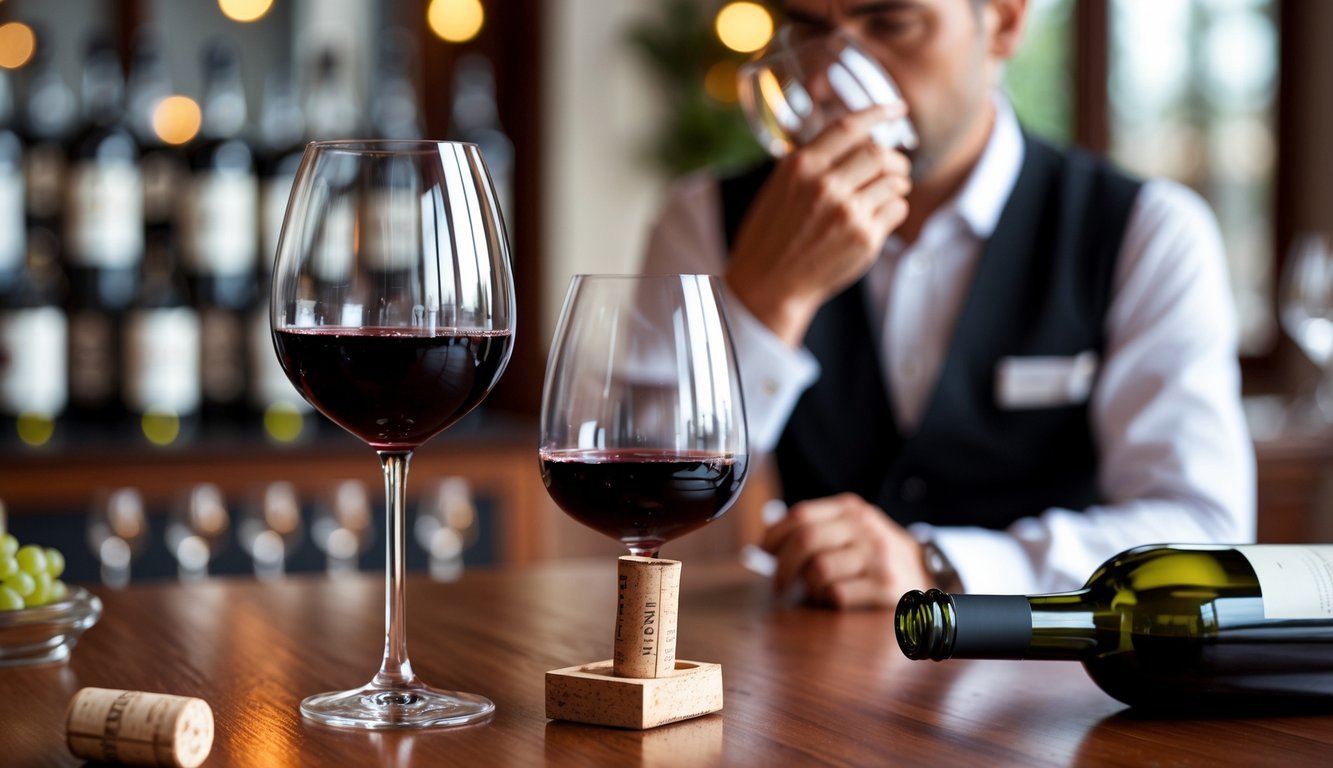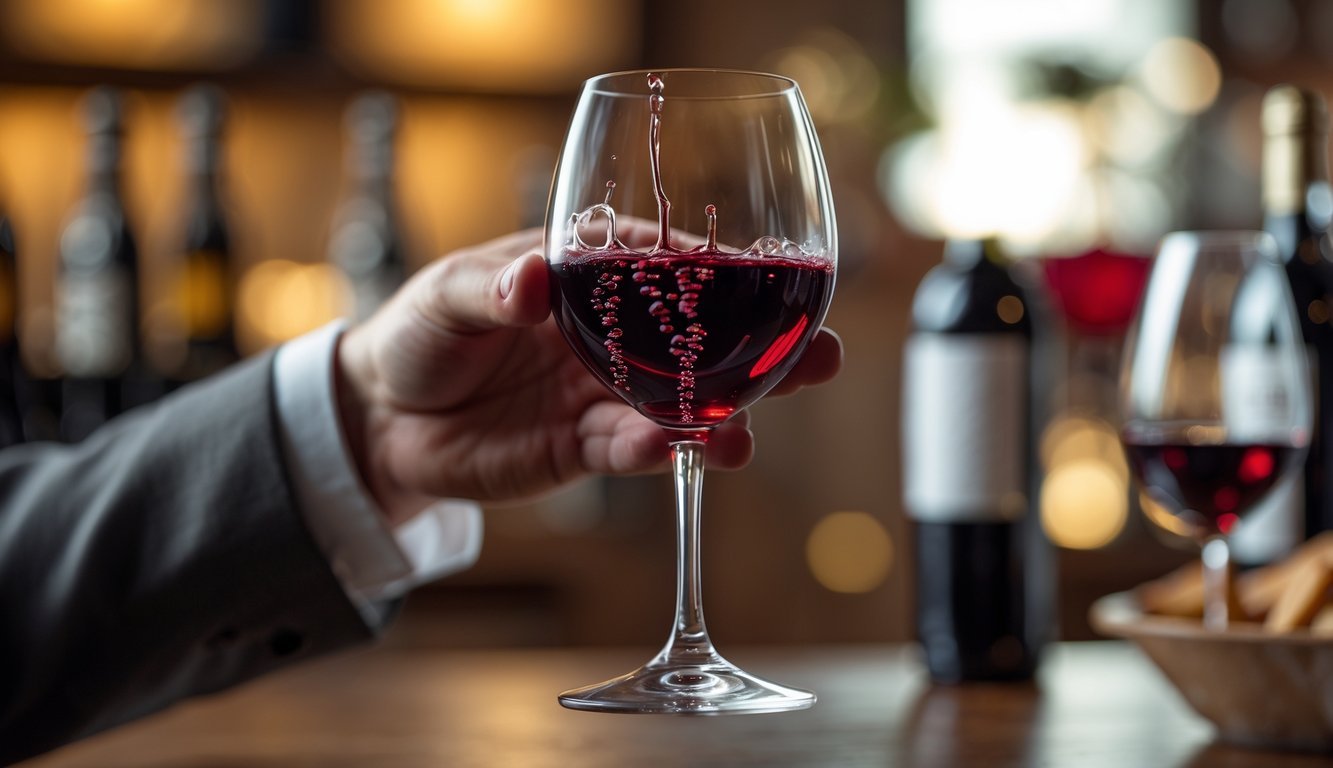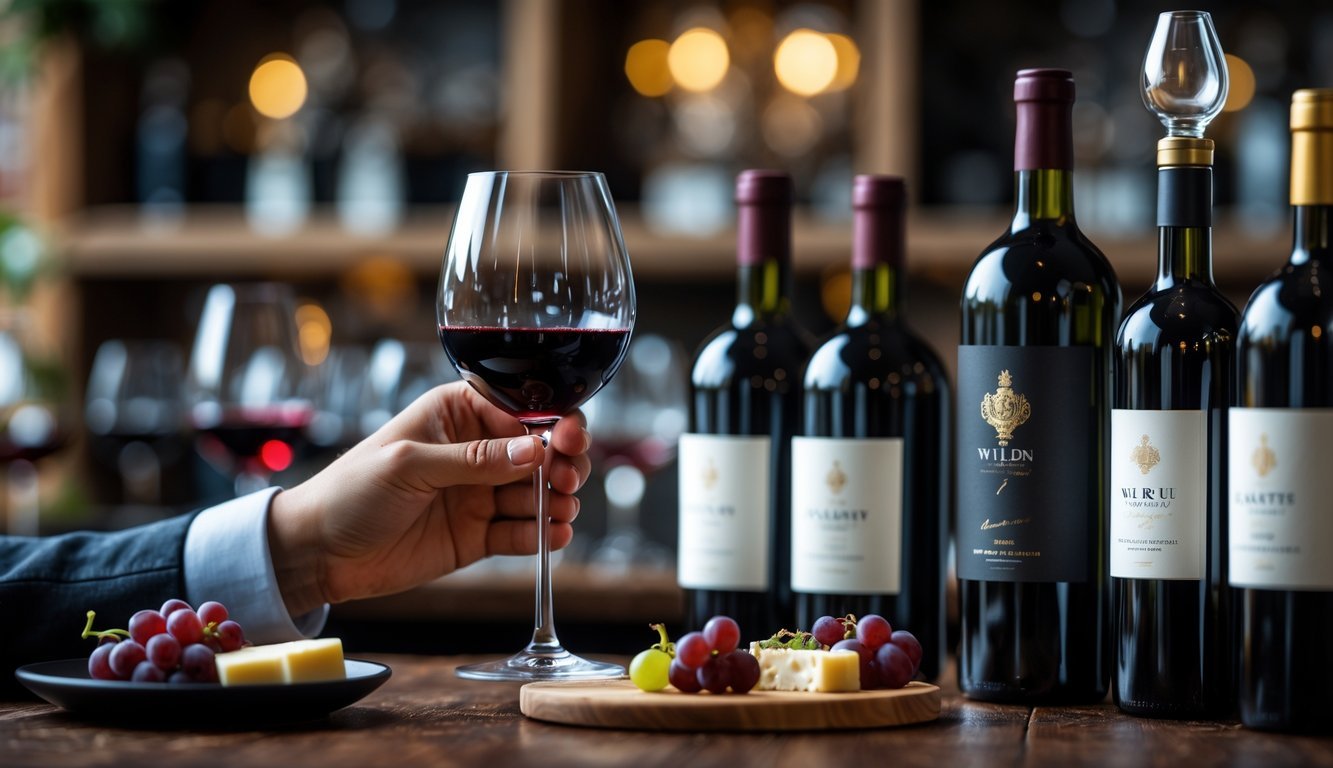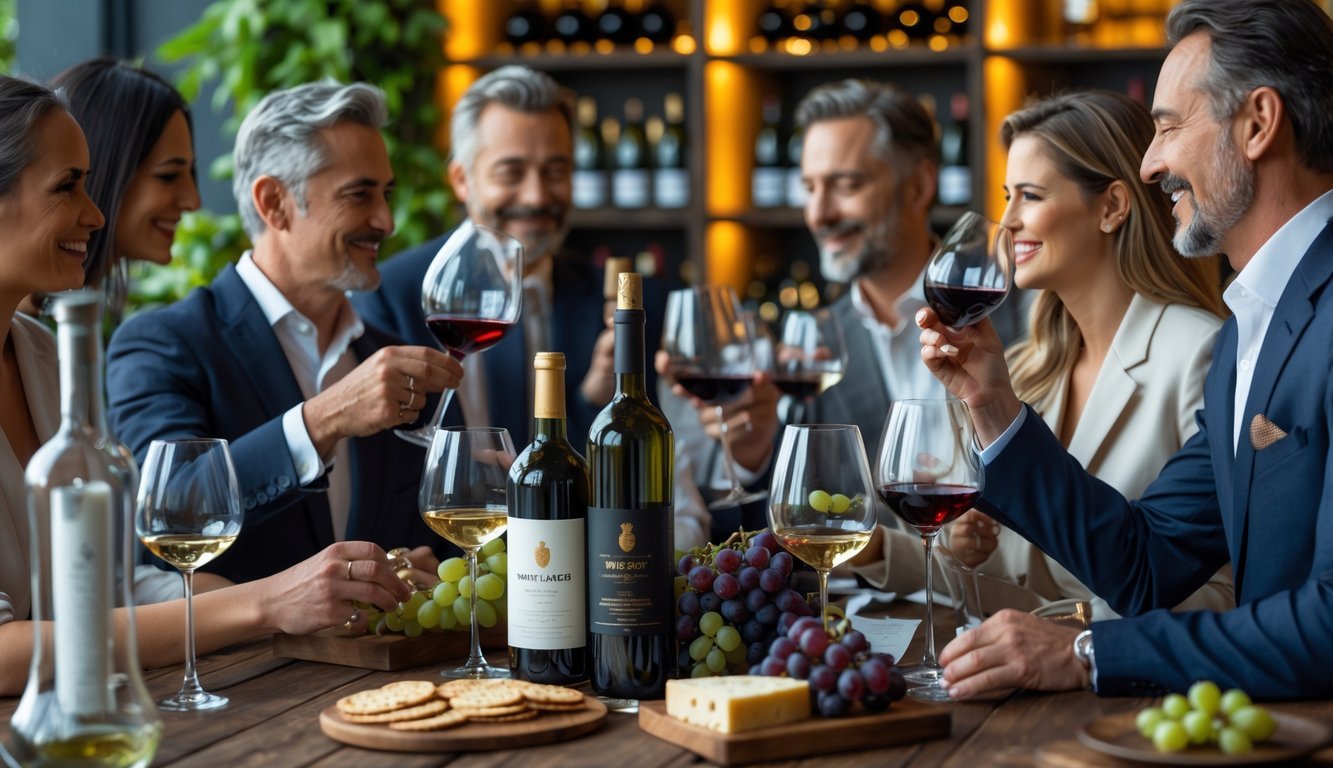PsychNewsDaily Publishers
100 Summit Drive
Burlington, MA, 01803
Telephone: (320) 349-2484
PsychNewsDaily Publishers
100 Summit Drive
Burlington, MA, 01803
Telephone: (320) 349-2484
Talking confidently about wine involves understanding key terms like terroir, corked wine, and vintage, along with proper tasting etiquette and descriptive vocabulary for aromas and flavors.

Talking about wine can feel a bit intimidating if you’re not super familiar with it. Still, you don’t need to be a sommelier to join in. With just a few easy tricks, you can jump into wine conversations and even impress a few people.
Here are 7 tips to help you sound like a wine expert, even if you’re still figuring things out. Whether you’re at a dinner party or just chatting over drinks, you’ll start to feel more at home talking wine.

If you mention “terroir” when talking about wine, people might think you know your stuff. Terroir means the mix of soil, climate, and land where the grapes grow.
Each of these factors changes the taste of the wine. Even grapes from the same variety can taste totally different depending on where they grow.
A grape grown in a cool spot might taste fresher or more tart than one from a sunny, hot area. Using terroir in conversation hints that wine is about more than just the grape.
It’s about the place and how it shapes the flavor. This little detail can make you sound like you’ve spent some time learning about wine.

Ever open a bottle and get a whiff of wet dog, damp cardboard, or even a musty basement? You can call that “corked wine.” A chemical called TCA from the cork causes it.
Corked wine loses its fruity flavors and smells kind of dull. It’s not spoiled, but it won’t taste good.
You can taste it to check, but if the smell is strong, it’s probably best to mention cork taint. Dropping “corked wine” into conversation shows you know about one of the most common wine flaws.

Swirl your wine and you’ll see droplets sliding down the glass. People call these wine legs or tears.
They show up because of the alcohol and sugar in the wine. Thicker, slower legs usually mean there’s more alcohol or sugar.
Talking about wine legs lets you show off a bit of knowledge. Just remember, legs don’t say much about quality.
They’re more about texture and strength. It’s a fun detail to mention if you’re feeling a little fancy.

Mentioning the balance between acidity and tannins in red wine shows you get how it works. Acidity gives wine a zippy, refreshing feel.
It makes your mouth water and keeps things lively. Tannins bring a drying, sometimes bitter edge.
They add body and can make wine feel more complex or heavier. Too much tannin and not enough acidity? The wine might taste rough.
But when they’re balanced, the wine feels smooth and vibrant. Knowing this helps you talk about what you like and sound a bit more confident.

When you describe wine, try talking about the “first,” “second,” and “finish.” The “first” is the first thing you taste.
It’s often simple and fresh. The “second” is what you taste after that first sip.
Here’s where you might notice fruit, spice, or other flavors. The “finish” is the taste that lingers after you swallow.
A long finish means the flavors stick around. Mentioning these stages makes your wine chat sound a little more expert.

Talking about the vintage year shows you know there’s more to wine than just taste. The vintage is the year the grapes were picked.
Weather that year changes how the wine tastes and how it ages. A warm year gives grapes more sugar, so the wine might turn out richer.
Cool or rainy years can totally change the flavor. If you compare wines from different years, you can highlight how climate makes each bottle unique.
It’s a small thing, but it can make you sound like you’ve done your homework.

If you mention “sommelier” when talking about wine, you show you know the right word for a wine expert. It makes you sound like you appreciate wine culture.
But sommeliers do more than just pick fancy bottles. They help you find something you’ll actually enjoy.
When you ask a sommelier for advice, you show you know who to trust. Using the word in conversation makes things sound relaxed and friendly, not snobby.

Learning a few key words helps you talk about wine more confidently. You’ll start to pick up common terms and ways to describe what you taste and smell.
Here are some basics to help you build your wine vocab:
| Term | Meaning |
|---|---|
| Varietal | The type of grape (e.g., Cabernet Sauvignon) |
| Tannin | A dry, bitter feeling from grape skins and seeds |
| Body | How heavy or light the wine feels in your mouth |
| Acidity | The crisp, fresh sensation that balances wine |
| Finish | The lasting taste after swallowing |
Using these words makes your conversation sound a bit sharper. For example, you might say, “This wine has a medium body with soft tannins,” to explain what you like.
When you taste wine, focus on what you smell and taste. Use simple words like fruity, earthy, or spicy to describe what stands out.
Try to name specific scents, like cherry, vanilla, or pepper. These details show you’re paying attention to the wine’s character.
You can also talk about texture—say if the wine feels smooth, creamy, or sharp. Mixing aroma and texture makes your description more interesting.
If you keep practicing, you’ll start to sound like someone who really knows their wine.

Knowing a few simple rules helps you enjoy wine more and make a good impression. This includes how to taste wine in the right order and how to serve or pour it.
If you’re tasting more than one wine, start with lighter wines and move to heavier ones. Dry white wines usually go before full-bodied reds.
Sparkling wines tend to come first since the bubbles wake up your taste buds. Taste wines from youngest to oldest.
Younger wines taste fresher, while older ones can be more complex. This order helps you enjoy each wine without one overpowering the next.
Take small sips and swirl the wine in your glass to release its aroma. Give it a sniff before you drink to catch all the different scents.
It’s a small thing, but it helps you enjoy the wine and look like you know what you’re doing.
Pour the wine slowly and carefully. That way, you’ll avoid spills.
Fill the glass just about one-third full. This leaves room to swirl the wine and helps the aromas open up.
Grab the bottle by the base or the neck when you pour. Try not to touch the rim of the glass with the bottle—nobody wants fingerprints or smudges.
Keep a cloth handy to catch any drips after you pour. It’s a small detail, but it makes things look neat.
Chill white wines, though don’t go overboard—too cold and you lose the flavor. Reds taste best a bit cooler than room temperature.
Offer wine to your guests from their right side. Pour for everyone else before you pour for yourself.
These little touches? They show you care about the wine and the people you’re sharing it with.